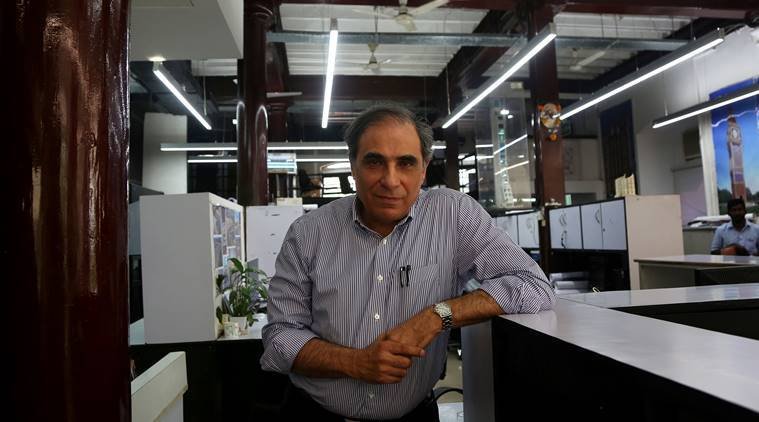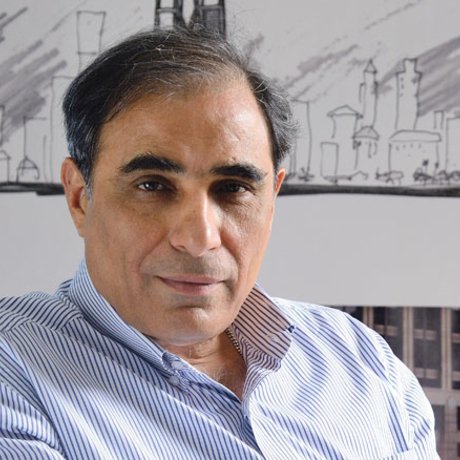
Landmark projects across the country, such as DLF in Gurgaon, Hiranandani Gardens in Mumbai, Ideal Topsia Tower in Kolkata and Sarala Birla Academy in Bengaluru, all have their mark. Ask home buyers to name an architect, and his name immediately pops up on their tongue. Because, quite simply, Hafeez Contractor is India’s most famous architect. (Most architects, if you ask him about Hafeez, say: “He is certainly the most famous. But certainly not the best.”)
Critics ridiculed his ability and principles, perhaps unfairly, saying that he had little meaningful architectural work to his credit. Activists believe he has sold his soul to builders – a man whose persuasive skills in maximizing FSI (Floor Space Index), they say, have hurt urban planning and unscrupulous builders. The wallet has become fat.
Last month, I met the man who has dominated the mind space in his field for nearly four decades. Dressed in his trademark half-sleeved white shirt, Contractor is a man who exudes a relaxed atmosphere with impatience. For someone with monumental personal wealth, however, their office in a heritage building is underestimated in design.
Granite Partition
After starting the practice in 1968 with a relative, the contractor’s journey in the field has been a long one. This went on for over a decade until a conflict resulted in a dispute with a relative over the color of granite used in a project. (The relative wanted gray. Hafeez wanted black. The customer agreed with Hafeez.) He killed himself in 1982. Till then, he was the one that many builders wanted for their projects. Because, to them, he was clearly a builders’ architect.
A Builders Architect
Unlike many of his peers, the contractor doesn’t let his architectural ego get in the way of his business ego: Customer satisfaction matters. A good example of this was a building called Vastu in Worli, Mumbai. It was conceptualized as a triangular structure. All designs were finalized and preliminary marketing materials were published, with foundation work in an advanced stage. Then, in the 1980s, on the day of Bhoomi-Poojan, builders’ consultants pointed out that a triangular structure would not be Vastu-friendly. (Vastu is an ancient Indian architectural philosophy in which harmony of all elements is necessary.)
Unfazed by last-minute surprises, the contractor immediately designed a circular structure instead of a triangular one and asked if it would satisfy the consultant. Did it. And Mumbai’s boldest project of that generation was born. A building in the form of a capsule overlooks the sea.
In 1988, he undertook a project that set the stage for the construction of a historic township called Hiranandani Gardens in Mumbai. The building was Lake Castle. It was in an area called Powai, which was largely uninhabited then. Hiranandani gave him a plot beside a hill. By then the contractor had recognized the functioning of the market in terms of demand and supply. Buyers delayed their purchases because of too much of a product, so the contractor experimented with some ideas. Eventually, he went with a plan that had no parallel then and still has little parallels today. “There were only three types of apartments. But I made all three of them 90. I made every flat something different,” he recalls. Simply put – as a customer, any change you wanted was available in the same building.
Every inch counts in Mumbai. Every rule has to be read, understood and interpreted. This is where the real skill of an architect comes in handy. – Hafeez Contractor
Critics Protest
The move was ridiculed by his critics, many of whom were from his own profession. “Hafeez Contractor is the Arnab Goswami of architecture (or Arnab is the Hafeez of journalism). They both hate to lose and are condemned by their peers for maligning the profession,” there is a refrain.
The contractor appears to have a similar disdain for many of its competitors – some of them well-known. “When you have big plots in small towns and cities with limited rules, it’s easy to talk about building. Here in Mumbai every inch counts. Every rule has to be read, understood and interpreted. That’s where The real skill of an architect comes in handy,” he explains.
That skill has served him well. It is hard to pinpoint many professions where one person has dominated so much stamina. This is also due to their aggressiveness in pricing, which secures deals with customers. The strategy resulted in what some called ‘half-fees’.
Another reason is that they understood the power of marketing before anyone else in their field. In an interview in 1994, he pointed to the value of advertising with a Bollywood analogy, saying: “Without advertising, you go nowhere.

